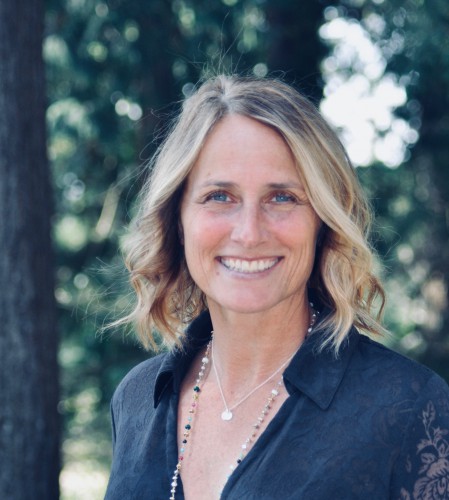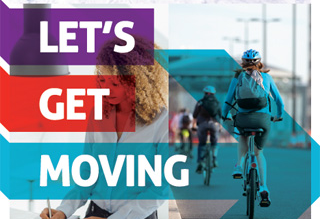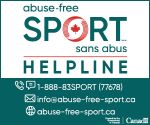PL4C operationalizes The Common Vision
 Created in 2018, A Common Vision for Increasing Physical Activity and Reducing Sedentary Living in Canada: Let’s Get Moving is a foundational document for all the work done at Sport for Life. With a focus on getting Canadians physically active, it aims to unite sectors such as recreation, health and sport in achieving milestones as part of a national policy. One way that Sport for Life puts it into practice is through the Physical Literacy for Communities (PL4C) initiative.
Created in 2018, A Common Vision for Increasing Physical Activity and Reducing Sedentary Living in Canada: Let’s Get Moving is a foundational document for all the work done at Sport for Life. With a focus on getting Canadians physically active, it aims to unite sectors such as recreation, health and sport in achieving milestones as part of a national policy. One way that Sport for Life puts it into practice is through the Physical Literacy for Communities (PL4C) initiative.
“There are five interdependent principles laid out by the Common Vision, and physical literacy is one of them, hence it becomes a really important part of what we do at Sport for Life. We see it as a guiding document nationally, and it moves in two ways,” said Drew Mitchell, Senior Director of Physical Literacy.
“In one direction, it reaches up to the UN’s Sustainable Development Goals, which were set up in 2015. And then, going the other way, it reaches down from the national level to the local community. We see the PL4C project as a way of operationalizing key components of the Common Vision.”
In each of the more than 130 communities participating in the PL4C project, a working group of cross-sectoral partners is brought together to collaborate on the best ways to develop physical literacy and increase physical activity. These partnerships fulfill one of the six areas of focus of the Common Vision, which calls for government policy leaders to “co-develop culturally relevant physical activity opportunities”.
“We believe that most of the solutions live in the community already, but the right people just haven’t necessarily been connected. What PL4C does is create an opportunity for better connectivity and better activation by those community partners,” said Mitchell.
Physical literacy on the ground
One of the communities bringing the Common Vision to life through PL4C is North Vancouver, where representatives from recreation, health, education, sport, social agencies and city planning departments work on a common vision of creating awareness and education around physical literacy and physical activity. They’ve also created a unique partnership with Capilano University, which is engaged in research projects related to physical literacy.

JoAnne Burleigh
“Each of these sectors builds out ideas and initiatives, shares resources, and builds capacity for the community as a whole. For example, collaboration with the City of North Vancouver place-making initiative is one project where physical literacy can have an impact at the community level through the creation of playlets, which give people the chance to interact and be active,” said Jo-Anne Burleigh, Active Living Coordinator for Vancouver Coastal Health.
“A playlet is a space that has been allocated for people to gather. In the city, they have some alleyways or former parking spaces where they have created a space for people to gather. These are places where people can be active, connect and come together. We also have a variety of different stencils on the ground, and little ideas on the walls that provide creative ways for how to move, that we’ve borrowed from the local schools.”
Another pilot project they’ve introduced to the community through Capilano University is called Move More North Shore CapU, and involves giving people prescriptions for physical activity.
“You get a referral from a counselling department or from your doctor, and then you’re teamed up with an activity facilitator. You have an interview, do an assessment about your level of activity, and then you’re referred to community resources that are in your interest area,” Burleigh said.
This fulfills multiple foundational principles from the Common Vision, including focusing on physical literacy” and ensuring their work is evidence-based and emergent-focused.
“The evaluations just came back and the results were exactly what we anticipated. People are moving more with less screen time and less sedentary behaviour.”
It takes a village
When Sport for Life CEO Richard Way looks at what the PL4C initiative has accomplished since its inception, he’s most proud of the ways it has brought communities together. He believes that fulfilling the ambitions of the Common Vision can only happen through collaboration and cooperation.
“It takes a village to create the environment and the opportunities for people of all ages, but especially our youth, to be able to move more and enjoy a love of movement. We’ve been working with many of the different premises within the Common Vision and bringing them to life with the health, education, recreation and sport sectors within communities. That’s exciting because we’re creating those conditions for healthy living,” he said.
“We have the UN Sustainable Development Goals, the Global Action Plan on Physical Activity (GAPPA) and the Common Vision to inform the work we do, and then it’s expressed through PL4C. The work we’re doing in communities with those documents as a guide allows the community to determine the solutions for themselves. I’m excited when Sport for Life can act as a facilitator for generating better opportunities for people to be active and healthy.”
Throughout the pandemic, the strength and innovation of the PL4C partner tables has benefited their respective communities in numerous ways, according to Way.
“With all the right relationships already established and in place, communities with PL4C partner tables found themselves in a much stronger position to innovate, collaborate and work together to find creative solutions to such a far-reaching challenge. Now, as the pandemic passes into memory, they’ll find themselves in a much stronger place to build back better.”


